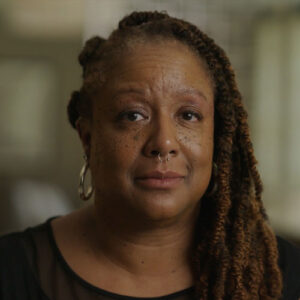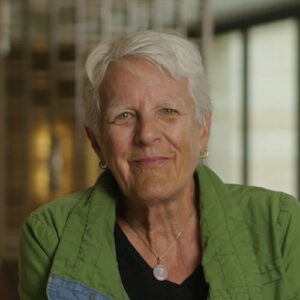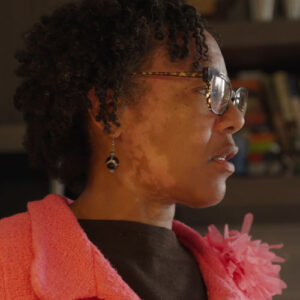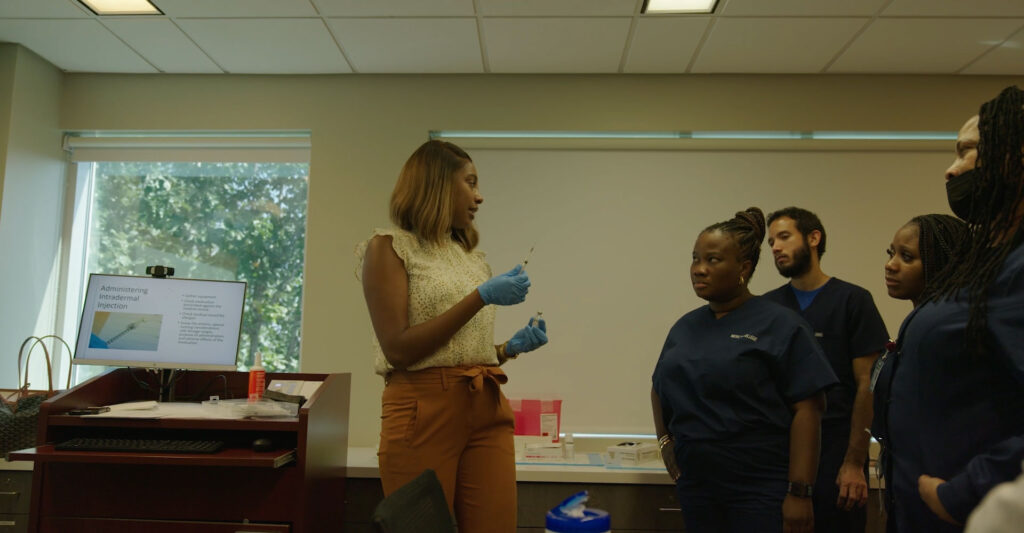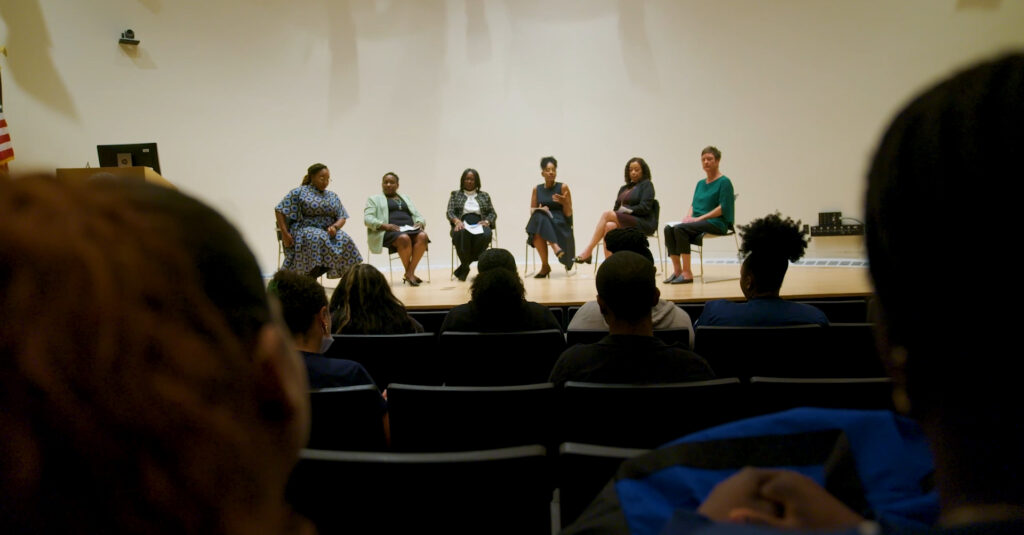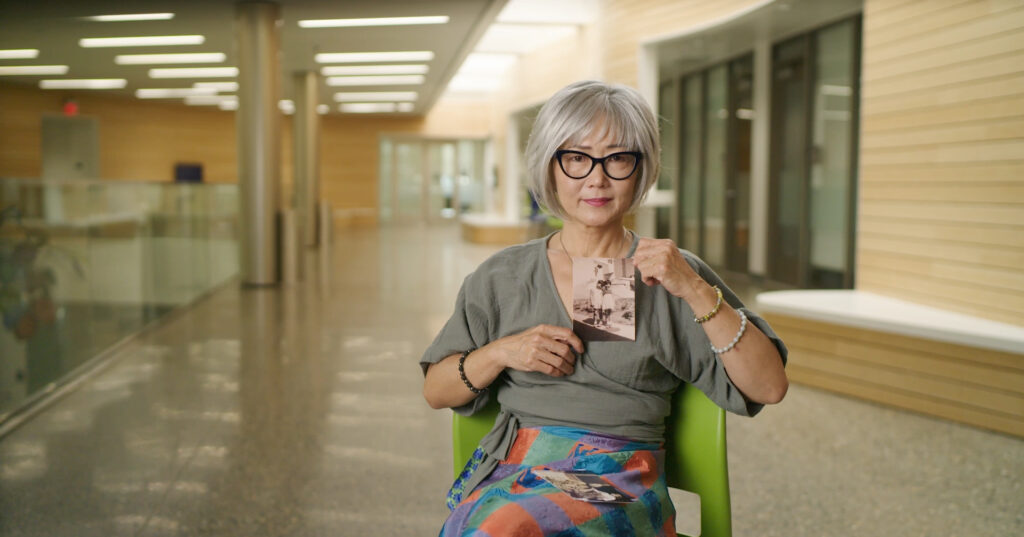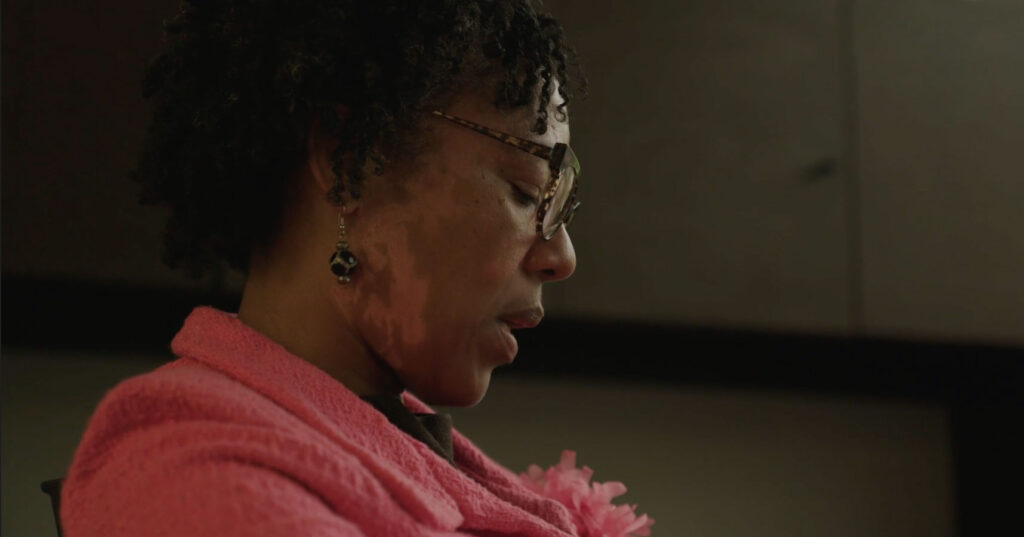
ACADEMIA
Who are our classrooms holding back?
Though registered nurses (RNs) make up the largest number of healthcare workers, the racial and ethnic disparities inside the profession have downstream effects on patient care. The future of nursing — and the fight for health equity — requires solutions that remove these barriers, unlocking access to nursing education while fostering diversity, inclusivity, and equity for those who want to enter the profession.
Building a more diverse nursing workforce begins with academia, but as fearless nurses like Dr. Kenya Beard, inaugural dean and chief academic officer for the School of Nursing at Mercy University, says in “Everybody’s Work,” there are clear cracks in the nursing academia pipeline and unfortunately, those who fall through are more than often nurses of color. As she points out, when nursing schools hold tight to stringent criteria like standardized tests and grade-point averages, patients miss out on getting the care they need from providers who represent them, even in the face of the ever-present nursing shortage.
STILLS & CLIPS
MORE THAN 4 IN 10 NURSES
SAY THEY BELIEVE RACISM AND/OR DISCRIMINATION WAS PART OF THEIR NURSING SCHOOL’S CULTURE.
SOURCE: “INSIGHTS INTO NURSES’ EXPERIENCES AND PERCEPTIONS OF DISCRIMINATION,” RWJF.ORG

JOIN THE
MOVEMENT
DIG DEEPER
Students of color experiencing racism within nursing school presents another significant barrier to a quality education and professional advancement. Research from the Robert Wood Johnson Foundation found that more than 4 in 10 nurses believe that racism and discrimination was part of their nursing school culture. According to the National League For Nursing, approximately 25% of nursing students leave their programs before graduation. A 2019 study found that nursing students of color may experience an attrition rate of double that of their white classmates.
Racial biases, discrimination, and microaggressions manifest as isolation, and a lack of support creates hostile learning environments, especially for students of color. Nursing school cultures like these impede not only the academic success of nurses of color but also their well-being and psychological safety. When these norms go unchallenged, they reinforce stereotypes in nursing school and become part of the education into the larger professional nursing culture. This conditioning can and does negatively impact patient care, leading to incorrect assumptions in healthcare like the idea that Black people have “thicker skin” and feel less pain.
Challenging these norms is difficult but imperative to providing equitable care for patients of color. Nursing schools and institutions have a responsibility to their students and the nursing profession to prioritize anti-racism efforts through comprehensive policies, training programs, and institutional support systems. According to the Commission to Address Racism in Nursing, this requires schools of nursing to rethink supporting both students and faculty of color to address these cultural issues.
Whether it’s implementing zero-tolerance discrimination policies, ensuring that students have a diverse range of lived experiences in their faculty to learn from, advocating for improved textbooks, or defining safe spaces for students to address and challenge instances of racism, there are many potential levers to pull to begin a path for change. But first, nursing institutions must be mindful of the intersection of race, health disparities, and social justice to make education more equitable and ethical for students. Adopting holistic admissions practices, creating pipeline programs to support students from diverse backgrounds, and alleviating financial burdens to education are just a few of the ways that nursing institutions can create environments where all aspiring nurses can thrive and improve health outcomes for diverse populations.
RECOMMENDED READING
EXPLORE MORE ISSUES
Workplace
The values that nurses are meant to exemplify get lost in biased and discriminatory workplace cultures, threatening the integrity of the profession as we know it.
Institutions
In the pursuit of racial healing, associations have had to reckon with their own pasts, uncovering contributions to nursing’s ills.



